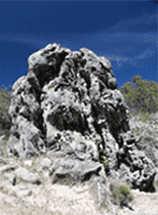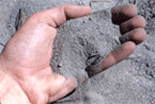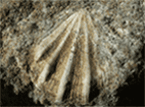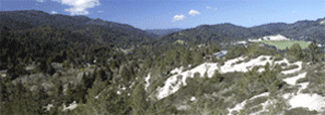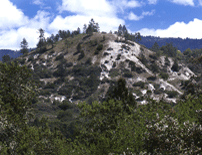The Santa Cruz Sandhills occur on Miocene marine sediments and sandstones of the Santa Margarita formation (right)--a highly weathered arkosic (high feldspar content) sandstone.
As evidence of their marine origins, the Sandhills feature many fossils of sand dollars (upper left), bivalves (lower left), and gastropods, as well as sharks teeth. Thick beds of fossil sand dollars (right) are found underneath the soil surface in Sandhills habitat between Ben Lomond and Scotts Valley. The presence of this layer is correlated with the occurrence of ridges which support sand parkland--a rare community within the Sandhills.
